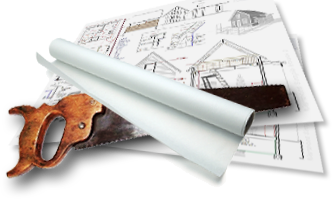Office carpets not only enhance the aesthetic appeal of the workplace but also endure substantial foot traffic daily. Regular cleaning is essential to prolong their lifespan and maintain a healthy workplace environment. The key to keeping office carpets in pristine condition is incorporating a consistent cleaning schedule.
Professionals in the field recommend using both routine and deep-cleaning methods. According to Sofia Martinez, CEO of Sparkly Maid Austin, vacuuming several times a week helps remove surface dirt and debris, while periodic deep cleaning tackles ingrained dirt, allergens, and stains. Carpet cleaning methods like steam cleaning or dry cleaning can revitalize carpets and ensure they remain hygienic.
A workplace with clean carpets contributes to a positive professional image and can improve indoor air quality. Employees and clients are likely to feel more comfortable and valued when the office environment is well-maintained.
Essentials of Carpet Cleaning
Maintaining your office carpet involves knowing the right cleaning methods, understanding the type of carpet you have, and selecting the appropriate cleaning supplies.
Understanding Carpet Types
Carpets come in various materials that impact both cleaning methods and maintenance schedules. Common types include nylon, polyester, and wool. Nylon is durable and handles heavy foot traffic well, making it suitable for office use. Polyester offers stain resistance, while wool provides natural luxury.
Identifying your carpet type helps to determine the appropriate cleaning method. Fiber thickness and pile design also play significant roles in how dirt is stored and released. A high-pile carpet might trap more debris but also softens noise.
Understanding these differences can optimize both regular cleaning and deeper maintenance routines. This knowledge helps in selecting the right cleaning products and techniques that won’t compromise the carpet’s integrity.
Carpet Cleaning Methods
Professional carpet cleaning services use several methods, including steam cleaning, dry cleaning, and bonnet cleaning. Each method is suited to particular carpet types and soil conditions. Steam cleaning, or hot water extraction, is effective for deep cleaning as it removes ingrained dirt and allergens.
Dry cleaning involves less water, using compounds or chemicals to break down soil, making it faster and reducing drying time. Bonnet cleaning, often used for surface cleaning, involves a rotating pad soaked in cleaning solution.
In locations like Miami, where humidity is high, rapid-drying methods can prevent mold growth. The choice of method impacts cleaning efficiency and should consider both carpet type and environmental conditions. Little Critters Sunshine Coast Pest Control can help eliminate fleas, identify bugs in your carpets and safely remove them.
Choosing the Right Cleaning Supplies
Choosing the right supplies is crucial for effective carpet maintenance. Eco-friendly cleaners are recommended, especially in office settings with heavy foot traffic. Look for solutions that are both potent and safe, offering a balance between cleaning strength and environmental responsibility.
It’s important to match cleaning agents with carpet material—wool, for instance, requires milder solutions. Regular vacuuming with a high-efficiency particulate air (HEPA) filter can greatly reduce dust and allergens.
Consider tools such as carpet brushes and spot cleaners for addressing isolated stains. In humid areas or those prone to spills, moisture absorbers and dehumidifiers can be useful to maintain air quality and prevent mildew.
Routine Maintenance and Stain Removal
To keep an office carpet looking new and fresh, regular upkeep is vital. Addressing stains promptly and scheduling deep cleanings enhances durability and aesthetics.
Daily Maintenance Tips
Regular vacuuming is essential for maintaining carpet cleanliness. Aim to vacuum high-traffic areas daily to remove dirt and prevent matting. Utilize entrance mats at doorways to capture debris before it reaches the carpet.
Spot cleaning should be part of the routine. Address spills immediately with a clean cloth to blot, not rub, the stain. Use mild detergent if needed, ensuring it’s appropriate for the carpet type. Consistent maintenance helps prolong the life of the carpet and keeps the workspace inviting.
Treating Common Stains
Accidents happen; quick response is key to stain management. For coffee spills, blot the area and then use a solution of one tablespoon of dish soap with two cups of warm water. Apply gently and blot dry.
Ink stains can be treated using a cloth dipped in isopropyl alcohol. Dab the stain lightly, avoiding saturation. For grease, sprinkle baking soda over the spill and let it absorb before vacuuming. Tailoring stain removal techniques to the specific type ensures better results.
Deep Cleaning Schedule
Scheduling regular deep cleaning is crucial for long-term carpet health. High-traffic areas benefit from quarterly professional steam cleaning. This method helps extract dirt embedded deep within the fibers.
For less-frequented spaces, aim for a semi-annual deep clean. In-house carpet cleaning equipment can also be utilized for interim cleaning. Ensure proper drying by using fans or good ventilation to prevent mold or mildew.








